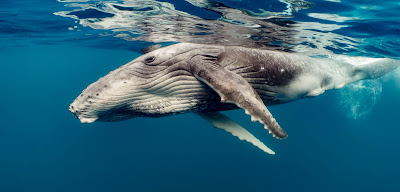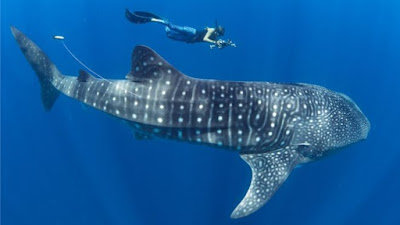stardust w whale | whale x ray
Whale
Whales are a widely distributed and diverse group of fully aquatic placental marine mammals. They can be an informal grouping within the infraorder Cetacea, usually excluding dolphins and porpoises. Whales, dolphins and porpoises belong to the order Cetartiodactyla with even-toed ungulates and their closest living relatives are the hippopotamuses, having diverged about 40 million years ago. The two parvorders of whales, baleen whales (Mysticeti) and toothed whales (Odontoceti), are thought to have split aside around 34 million years ago. The whales comprise 8-10 extant families: Balaenopteridae (the rorquals), Balaenidae (right whales), Cetotheriidae (the pygmy right whale), Eschrichtiidae (the off white whale), Monodontidae (belugas and narwhals), Physeteridae (the orgasm whale), Kogiidae (the dwarf and pygmy sperm whale), and Ziphiidae (the beaked whales).
Whales are animals of the open ocean; they feed, mate, give beginning, suckle and raise their particular young at sea. Consequently extreme is their variation to life underwater that they are unable to survive on land. Whales range in size from the installment payments on your 6 metres (8. five ft) and 135 kilograms (298 lb) dwarf ejaculate whale to the 29. hunting for metres (98 ft) and 190 metric tons (210 short tons) blue whale, which is the largest creature which includes ever lived. The orgasm whale is the largest toothed predator on earth. Several types exhibit sexual dimorphism, in this particular the females are bigger than males. Baleen whales have zero teeth; instead they have discs of baleen, a fringe-like structure used to expel normal water while retaining the pelagos and plankton which they feed on. They use their throat pleats to expand the mouth to take huge gulps of water. Balaenids have heads that will make up 40% of their body system mass to take in water. Toothed whales, on the other hand, have conical teeth adapted to catching fish or squid. Baleen whales have a well developed sense of "smell", although toothed whales have well-developed hearing − their reading, that is adapted for both air and water, is very well developed that some can survive even if they are blind. A lot of species, such as sperm whales, are well adapted for snorkeling to great depths to catch squid and other favoured prey.
Whales have evolved from land-living mammals. As such whales must breathe air regularly, although they can remain sunken under water for a long time. Some species such as the orgasm whale are able to stay sunken for as much as 90 moments.|1| They have blowholes (modified nostrils) located on best of their heads, through which air is taken in and removed. They are warm-blooded, and have a layer of fat, or perhaps blubber, under the skin. With streamlined fusiform bodies and two limbs that are altered into flippers, whales may travel at up to 20 knots, though they are not as flexible or agile as closes. Whales produce a great selection of vocalizations, notably the extended songs of the humpback whale. Although whales are common, most species prefer the cooler waters of the Northern and Southern Hemispheres, and move to the equator to give labor and birth. Species such as humpbacks and blue whales are capable of traveling thousands of miles without feeding. Males typically mate with multiple females every year, although females only mate every two to three years. Calves are typically born in the spring and summer months and females bear all of the responsibility for raising all of them. Mothers of some varieties fast and nurse their very own young for one to two years.
When relentlessly hunted for their goods, whales are now protected by simply international law. The North Atlantic right whales almost became extinct in the 20th century, with a population low of 450, and the North Pacific grey whale population is ranked Critically Decreasing in numbers by the IUCN. Besides whaling, they also face threats out of bycatch and marine pollution. The meat, blubber and baleen of whales have got traditionally been used by native peoples of the Arctic. Whales have been depicted in various cultures worldwide, notably by the Inuit and the coastal peoples of Vietnam and Ghana, exactly who sometimes hold whale funerals. Whales occasionally feature in literature and film, as in the great white whale of Herman Melville's Moby Wang. Small whales, such as belugas, are sometimes kept in captivity and trained to perform tricks, but breeding success has been poor and the animals frequently die within a few months of capture. Whale watching has changed into a form of tourism around the world.
The phrase "whale" comes from the Old British whæl, from Proto-Germanic *hwalaz, from Proto Indo European *(s)kwal-o-, meaning "large ocean fish". The Proto-Germanic *hwalaz is also the source of Aged Saxon hwal, Old Norse hvalr, hvalfiskr, Swedish val, Middle Dutch wal, walvisc, Dutch walvis, Old High German wal, and In german Wal.|2| The obsolete "whalefish" has a identical derivation, indicating a time once whales were thought to be fish.|citation needed| Additional archaic English forms consist of wal, wale, whal, whalle, whaille, wheal, etc .|3|
The term "whale" is sometimes used interchangeably with dolphins and porpoises, acting as a synonym for Cetacea. Six types of dolphins have the word "whale" in their name, collectively often known as blackfish: the killer whale, the melon-headed whale, the pygmy killer whale, the false killer whale, as well as the two species of pilot whales, all of which are classified under the family Delphinidae (oceanic dolphins).|4| Each types has a different reason for that, for example , the killer whale was named "Ballena asesina" by Spanish sailors, which usually translates directly to "whale assassin" or "whale killer", nevertheless is more often translated to "killer whale".|5|
The definition of "Great Whales" covers these currently regulated by the Cosmopolitan Whaling Commission:|6| the Odontoceti family Physeteridae (sperm whales); and the Mysticeti families Balaenidae (right and bowhead whales), Eschrichtiidae (grey whales), and some of the Balaenopteridae (Minke, Bryde's, Sei, Black and Fin; not Eden's and Omura's whales).
Mysticetes are also known as baleen whales. They have a pair of blowholes side-by-side and lack teeth; rather they have baleen plates which in turn form a sieve-like composition in the upper jaw crafted from keratin, which they use to filter plankton from the water. A few whales, such as the humpback, stay in the polar regions wherever they feed on a reliable origin of schooling fish and plancton.|10| These pets or animals rely on their well-developed flippers and tail fin to propel themselves through the normal water; they swim by shifting their fore-flippers and end fin up and down. Whale ribs loosely articulate with their thoracic vertebrae at the proximal end, but do not form a rigid rib cage. This adaptation allows the upper body to compress during profound dives as the pressure increases.|11| Mysticetes consist of four families: rorquals (balaenopterids), cetotheriids, right whales (balaenids), and grey whales (eschrichtiids).
The main difference between each family of mysticete is in the feeding adaptations and pursuing behaviour. Balaenopterids are the rorquals. These animals, along with the cetotheriids, rely on their throat pleats to gulp large amounts of water while feeding. The throat pleats extend from your mouth to the navel and allow the mouth to expand into a large volume for more effective capture of the small pets or animals they feed on. Balaenopterids comprise of two genera and 8 species.|12| Balaenids are the right whales. These types of animals have very large minds, which can make up as much as 40% of their body mass, and much of the head certainly is the mouth. This allows them to consume large amounts of water within their mouths, letting them feed more effectively.|13| Eschrichtiids have one living member: the grey whale. They are bottom feeders, mainly eating crustaceans and benthic invertebrates. They give food to by turning on their factors and taking in water mixed with sediment, which is then expelled through the baleen, leaving their prey trapped inside. This is an effective method of hunting, in which the whale has no major competitors.
Odontocetes are known as toothed whales; they have teeth and only one particular blowhole. They rely on their very own well-developed sonar to find their way in the water. Toothed whales send out ultrasonic clicks using the melon. Sound ocean travel through the water. Upon striking an object in the water, the sound waves bounce back at the whale. These vibrations are received through fatty tissues inside the jaw, which is then rerouted into the ear-bone and in the brain where the vibrations happen to be interpreted.|15| All of the toothed whales are opportunistic, meaning they will eat anything at all they can fit in their esophagus because they are unable to chew. These types of animals rely on their well-developed flippers and tail b to propel themselves throughout the water; they swim by simply moving their fore-flippers and tail fin up and down. Whale ribs loosely articulate with the thoracic vertebrae at the proximal end, but they do not type a rigid rib cage. This adaptation allows the chest to compress during deep dives as opposed to resisting the force of normal water pressure.|11| Taking out dolphins and porpoises, odontocetes consist of four families: belugas and narwhals (monodontids), ejaculation whales (physeterids), dwarf and pygmy sperm whales (kogiids), and beaked whales (ziphiids). There are six species, often referred to as "blackfish", that are dolphins commonly misconceived as whales: the killer whale, the melon-headed whale, the pygmy killer whale, the fake killer whale, and the two species of pilot whales, all of which are classified under the family members Delphinidae (oceanic dolphins).|4|
The differences between families of odontocetes include size, feeding adaptations and distribution. Monodontids incorporate two species: the beluga and the narwhal. They the two reside in the frigid arctic and both have large amounts of blubber. Belugas, being bright white, hunt in large pods near the surface and around pack ice, their couleur acting as camouflage. Narwhals, being black, hunt in large pods in the aphotic zone, but their underbelly even now remains white to remain camouflaged when something is looking immediately up or down at them. They have no dorsal fin to prevent collision with pack ice.|16| Physeterids and Kogiids include sperm whales. Sperm whales consist the largest and most basic odontocetes, and spend a big portion of their life hunting squid. P. macrocephalus stays most of its life searching for squid in the depths; these kinds of animals do not require any kind of degree of light at all, in fact , blind sperm whales have been completely caught in perfect health. The behaviour of Kogiids remains largely unknown, however due to their small lungs, they are thought to hunt in the photic zone.|17| Ziphiids consist of 22 species of beaked whale. These vary from size, to coloration, to syndication, but they all share a similar tracking style. They use a suction technique, aided by a couple of grooves on the underside with their head, not unlike the throat pleats on the rorquals, to feed.





Comments
Post a Comment